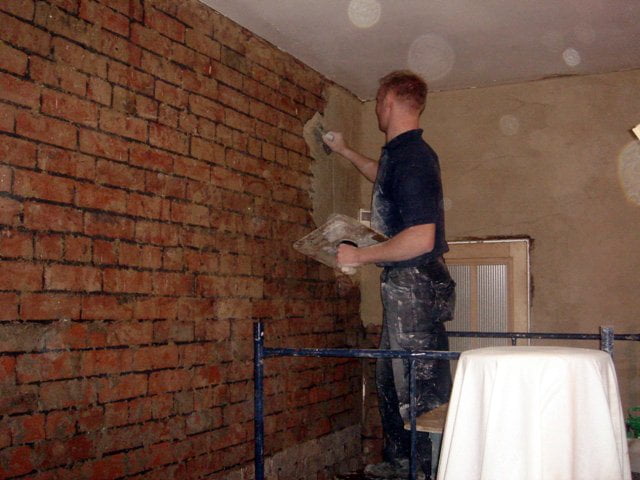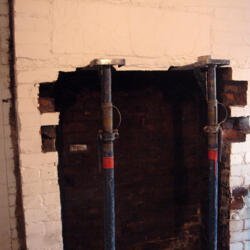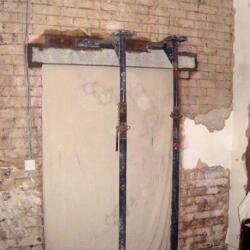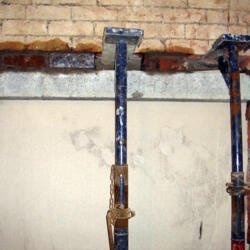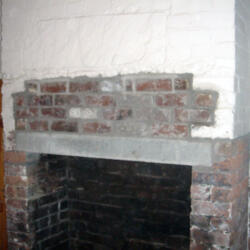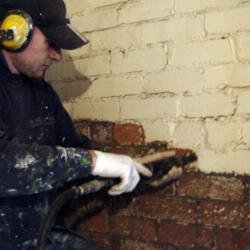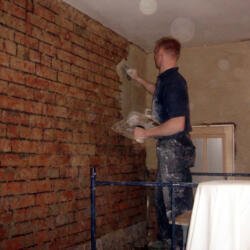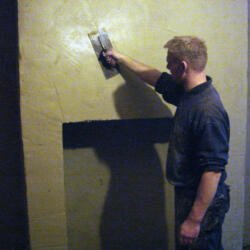
This project involved replacing old timber lintels over the living room fire plave with new concrete lintels and applying a lime plaster finish to the walls. The project was Started in January 2006 for private client, which took 4 weeks to complete.
Firstly We installed acro props to hold up the chimney breast and removed the old timber lintels. We then installed a new pre-cast concrete lintel and rebuilt the brickwork above. Once this had been left for a few days to settle we removed the acro props.
We also replaced the old timber lintels over the doorways with new concrete lintels. The traditional timber lintels had become rotten over time. Again we used acro props and strong boys to hold up the brickwork above the door as we replaced the lintel. The brickwork surrounding the doorway was repaired using a NHL lime based mortar. When lime plastering over a concrete or timber lintel you need to install a reinforcing mesh to prevent the lime plaster from cracking.

We had to remove all the modern paint from the brickwork before we starting the Lime Plastering process. We did this using an air powered needle gun, which removes the paint easily with minimum mess. We have a number of paint removal systems at UK Restoration Services. We also had to wash down all the old soot from the inside of the fireplace, to achieve a good bond.
We applied 3 coats of Lime Plaster on the brickwork in the fireplace. Lime based plaster does not crack when exposed to heat, unlike normal gypsum plasters. The Lime Plaster will also help the walls breathe and control Rising Damp and Dampness. Most modern day plasters trap the moisture in the wall causing mould growth & damp. The Lime Plaster allows moisture to pass through (breathing).
Once the first coat of Lime Plaster is applied we leave the plaster for up to 7 days to allow the setting action to take place. Depending on the brickwork or stonework type this can be from 2 days to 7 days and sometimes longer. Some backgrounds needs a thick pointing before any lime plastering takes place these are normally stonework backgrounds. Most brickwork background can be lime plastered in 2 or 3 coats of lime plaster. Lime plastering is normally take longer than modern plasters.
The lime plaster base coat is traditionally made with a course sand called “course stuff” and mixed with a lime putty. The base coat is very sticky and is ideal for applying to solid backgrounds like brickwork and stonework. The Lime Putty plaster is also the most breathable but this also makes it the softest lime plaster.
For the 2nd and 3rd coats we use NHL 2 lime plaster which is a dry powder mixed with sand. This type of lime plaster is best mixed in a paddle mixer to give a smooth texture. The NHL 2 will allow the lime plaster to have a Hydraulic setting action once applied to background. The NHL 2 lime plaster is not as sticky as the lime putty used for the base coat. The 2nd and 3rd coat of lime plaster is floated with cross grain float after application with a steel trowel.
